Visiting Auschwitz-Birkenau: Everything you need to know
The year 2020 was the 75th anniversary of the liberation of the Auschwitz-Birkenau concentration camp in Poland when we were visiting Auschwitz and Birkenau.
Auschwitz Survivors were the most important guests of the event commemorating the 75th anniversary of the liberation of the Auschwitz Concentration Camp. Arriving from all over the world the survivors of Auschwitz and Birkenau came to remember those who did not survive the horrors of the camps.
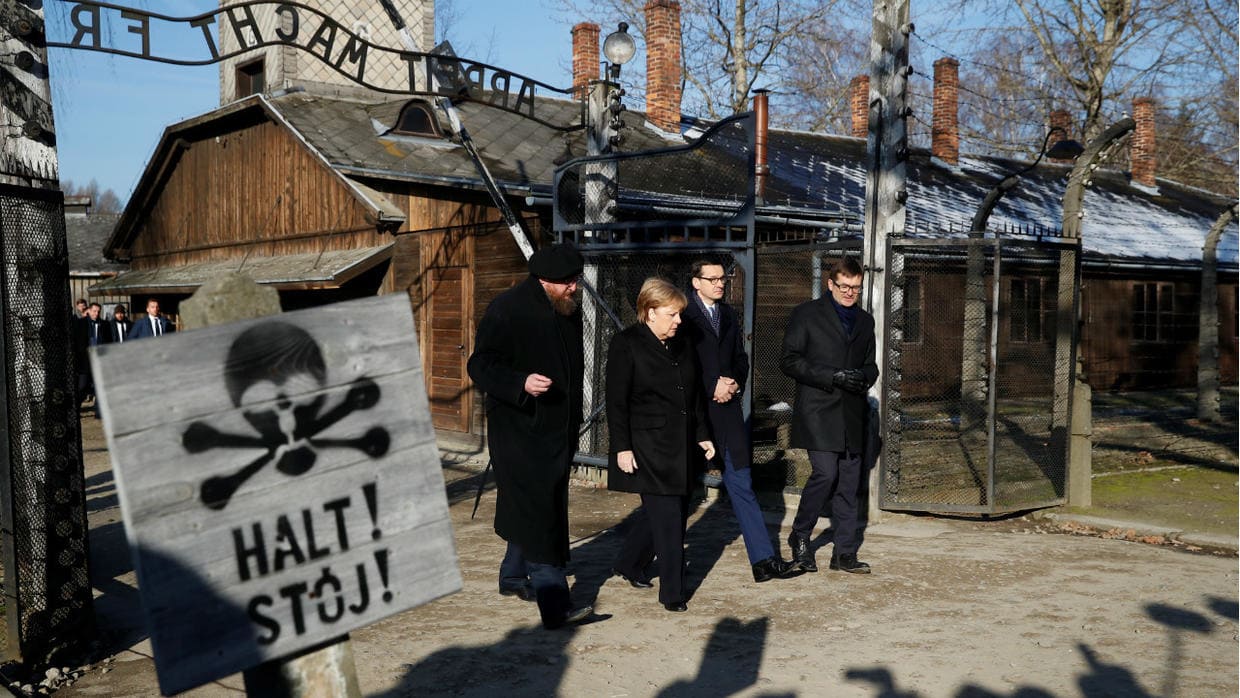

Xyuandbeyond is reader-supported. When you buy through links on our site, we may earn an affiliate commission. You can read my privacy policy here.
- Visiting Auschwitz-Birkenau: Everything you need to know
- Tips for visiting Auschwitz Concentration Camp from Krakow
- Official rules for visiting Auschwitz
- Rules For Visiting Auschwitz
- Tickets to Auschwitz
- How to get to Auschwitz where is it located?
- Why visit Auschwitz?
- Auschwitz Birkenau History
- Auschwitz Birkenau location map
- How to Get to Auschwitz from Krakow
- Auschwitz Concentration Camp tours from Krakow
- Auschwitz Group Tour from Krakow
- Visiting the Auschwitz-Birkenau Memorial and Museum
- The Auschwitz Album
- March of the Living
- Books about Auschwitz
- German Law on Nazi symbols
I first learned of the Holocaust in primary school in Canada when I read the Diary of Anne Frank, I think I was about 9 or 10 at the time and the book burned itself into my memory and has never left me. Around that time I also learned from my mother that my grandfather’s mother was Jewish.
I knew when I planned a visit to Poland that one of my main goals was going to be to visit the Auschwitz Memorial & Museum. In March of 2020, I went with 3 friends to visit Krakow and it is with thanks to Auschwitz Tour who provide a great Krakow Auschwitz Birkenau tour.
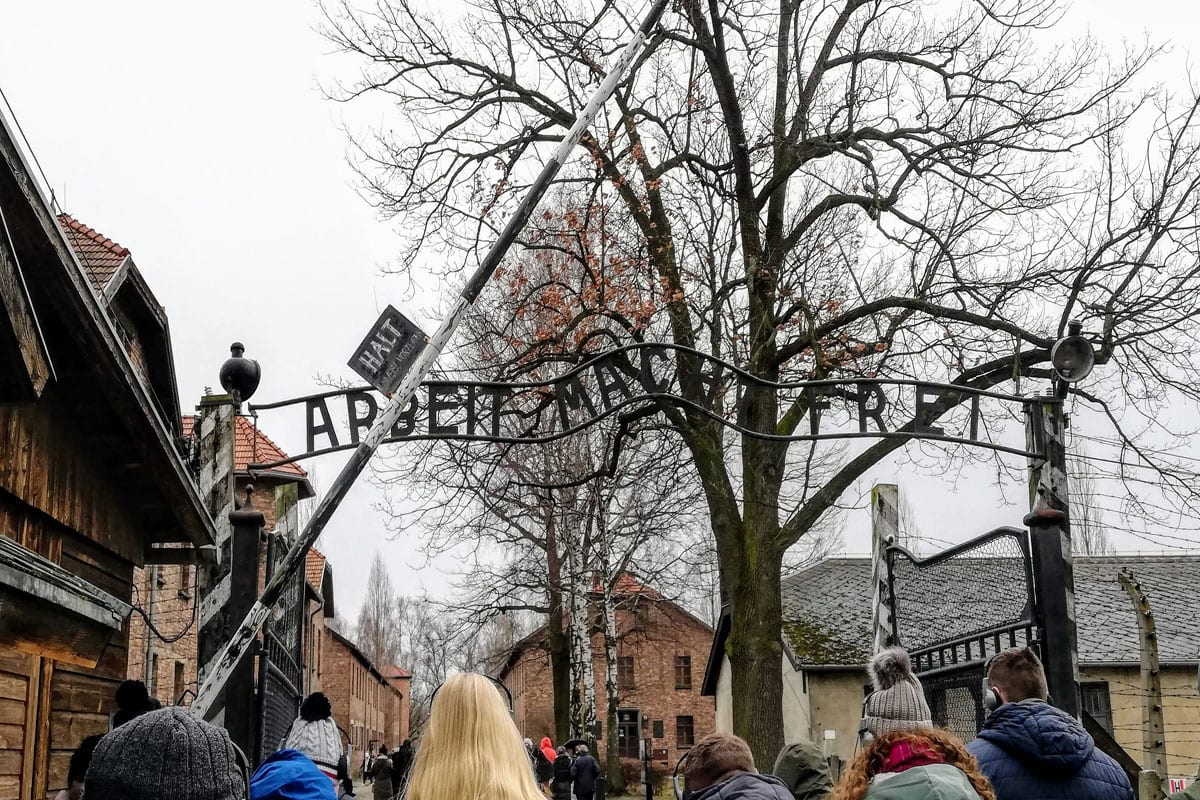

Tips for visiting Auschwitz Concentration Camp from Krakow
The Auschwitz-Birkenau Memorial concentration camp was a complex of over 40 concentration and extermination camps. The memorial site covers two preserved parts of the camp: Auschwitz I and Auschwitz II-Birkenau, spread over a total area of 191 hectares.
- It is a long rough walk for around 3 hours. There are at least 3 staircases to manoeuvre and the camps are simply not built for accessibility. The terrain is very rough and difficult for those with any mobility challenges let alone wheelchairs. You will need assistance if in a wheelchair to get around on the broken paths and rubble-strewn roads.
- There is no break from the rain or the sun depending on what season you visit. There are no benches to rest at anywhere inside or out. It will be hotter than hell or muddy damp and miserable. No matter this is a pilgrimage not a trip to the beach.
- There is a security point that you must go through where your bags will be searched and you will go through a metal detector. Bags any bigger than very small backpacks will not be allowed in and you will have to store them in the lockers provided.
- Auschwitz is not recommended for those under 14 years old.
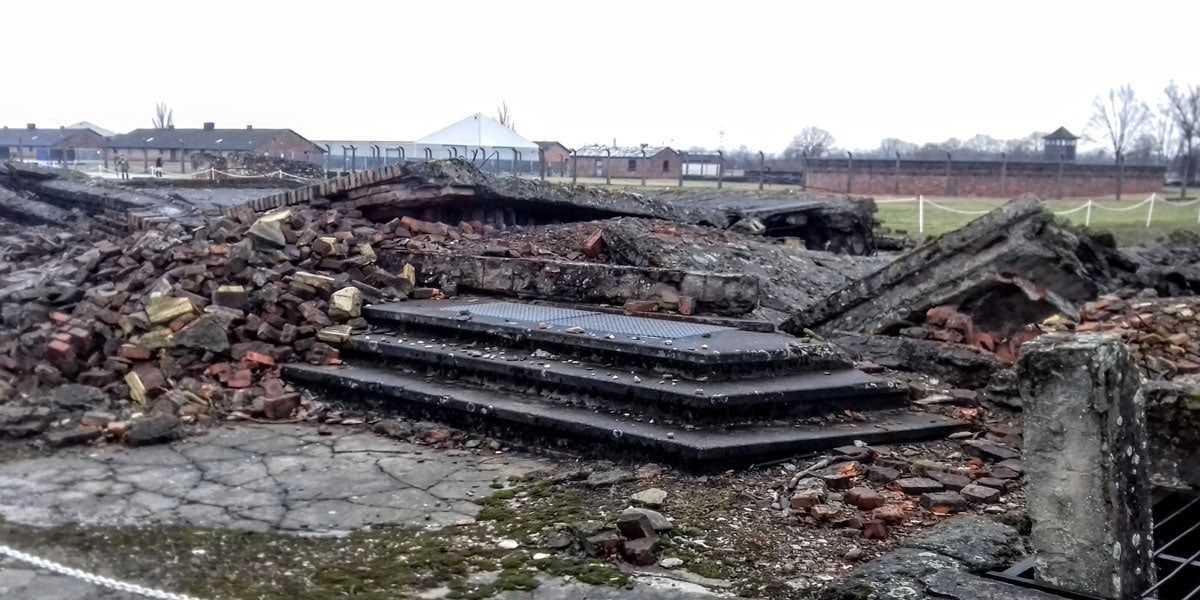

- You are allowed to take photographs in both Auschwitz and Birkenau, but there are some areas in which photography is strictly prohibited to ensure respect for those who suffered here.
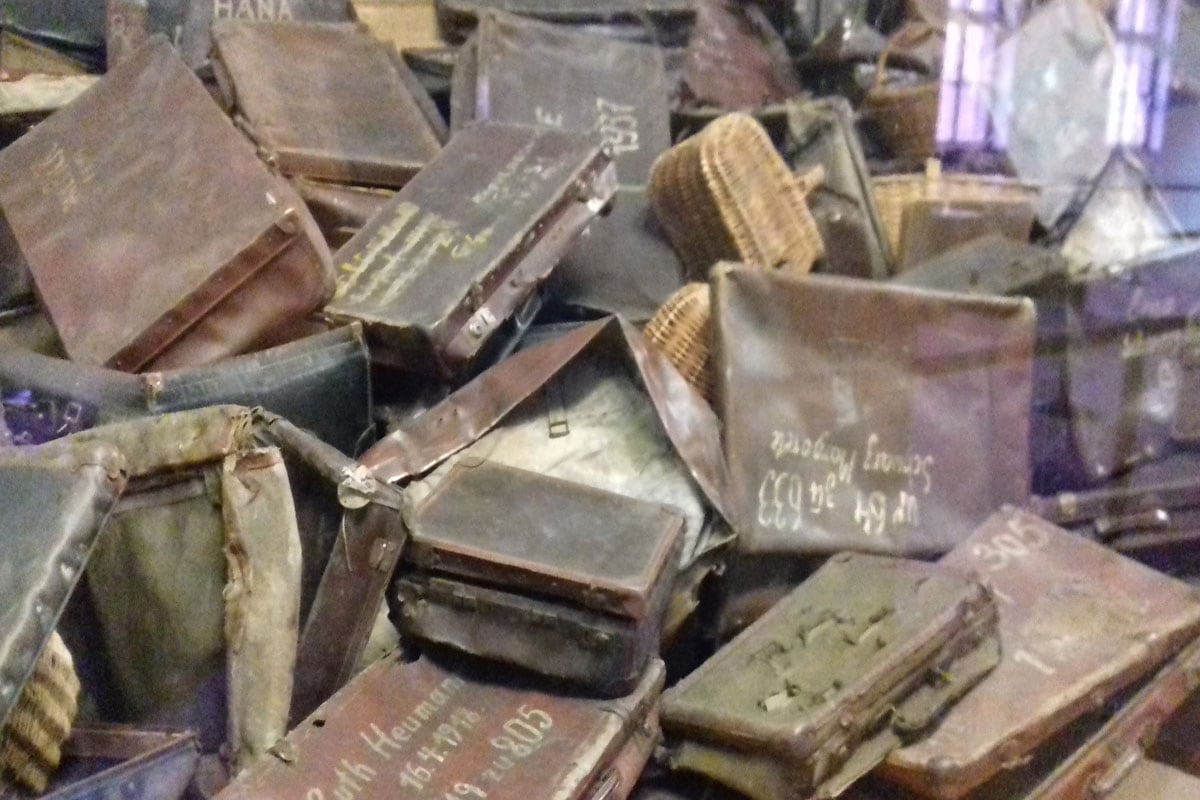

- Keep in mind at all times that you are walking through a memorial and that people died and were buried here.
- DO NOT take any selfies that is in extremely bad taste.
- You may see groups of people praying, singing or various memorial services taking place around the Camp please be respectful and ask permission before photographing.
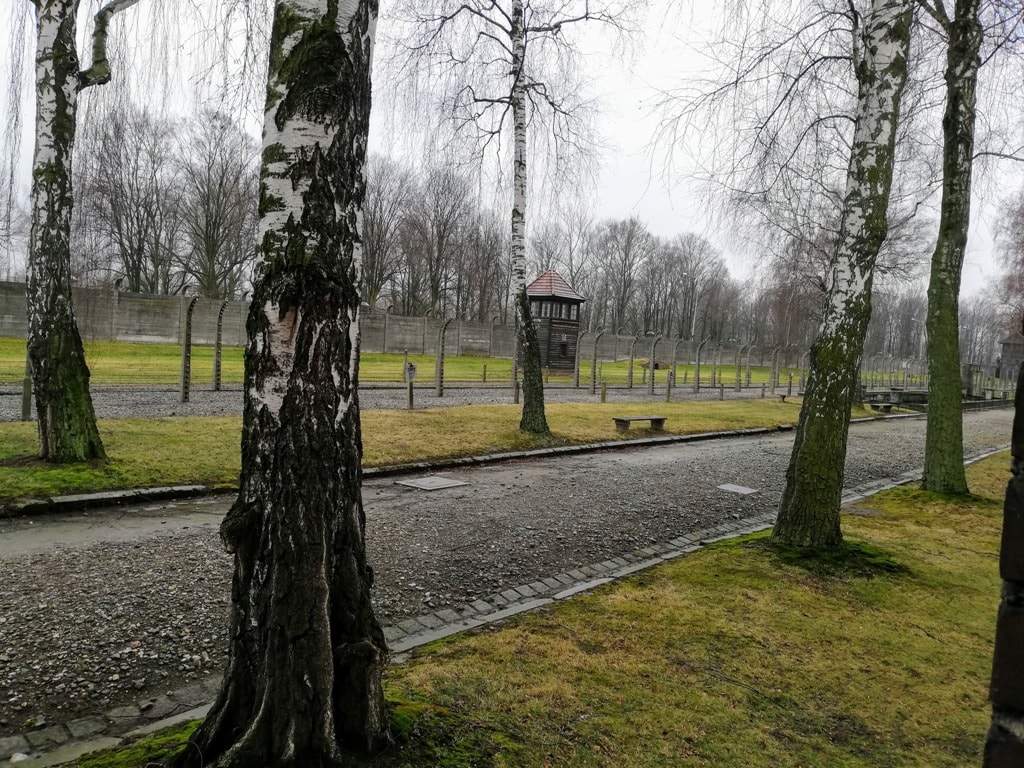

Official rules for visiting Auschwitz
Rules For Visiting Auschwitz
There are rules for visiting Auschwitz listed on their website which you should know before you go. This is not a “tourist” activity this is a serious almost pilgramage to a memorial site where horrendous crimes took place. These rules are from the offficial Auschwitz Memory Place and Museum.
- You must ‘behave with due solemnity and respect. Visitors are obliged to dress in a manner befitting a place of this nature.’
- Photography is allowed, but not with a tripod or a flash, and not at all in two specific areas: Block 4 Room 5 and underground Block 11
- Drones are restricted and you need a permit to use one
Memorial and Museum Auschwitz-Birkenau hours
Auschwitz II-Birkenau camps are open are open seven days a week from 07:30. Closing times depend on the month of the year so check before you go. Auschwitz and Birkenau are located three kilometres apart, a forty minutes walk.
You can access the free bus which links the two sites from April 15th through October 31st departing every sixty minutes. Note: The bus runs from Birkenau on the hour and from Auschwitz, thirty minutes later.
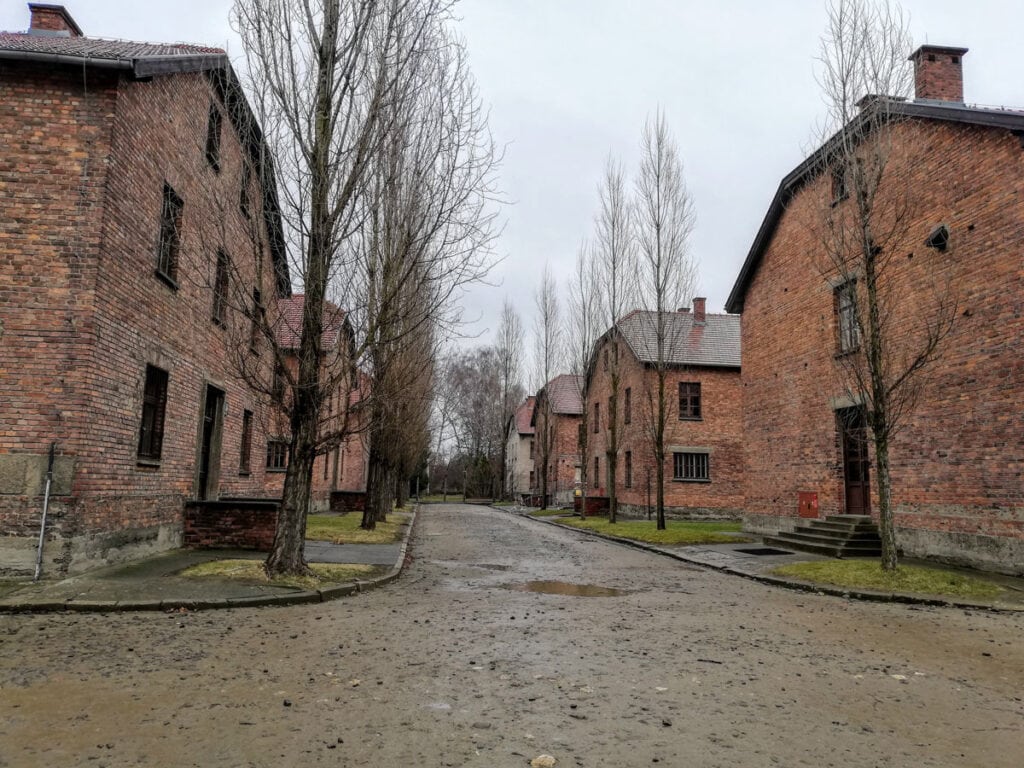

Tickets to Auschwitz
An individual ticket for a foreign language guided tour of both camps costs 60/55 Polish Zloty which equals around $15 US dollars. Admission without a guide (when possible) to either camp is free.
All visits must be booked in advance through the website visit.auschwitz.org. As a result, you may find there are no tickets available for the day you would like to visit because they have all been purchased by tourist agencies.
If you are determined to visit Auschwitz I by yourself on public transit you should know that during the peak season from March 1- October 3, it is mandatory to buy a ticket and become part of a 3.5hr guided tour unless you get there before 10:00 or after 16:00. Birkenau or Auschwitz II is always free to independent visitors.
Even if visiting independently for free, you still need a ‘free ticket’ from the ticket office. I absolutely recommend taking a guided tour you just won’t get as much out of the “free” experience as you will a tour.
There is a schedule of guided tours that are held in various languages from English, Polish, German, French, Italian, Russian, Spanish, Hungarian, Dutch, Swedish and Japanese (also Czech and Slovak in July and August). To their credit, the museum makes a big effort to provide the tour in the native language of each guest (despite the website being only in English and Polish), and tours in languages other than those mentioned can be easily arranged through the website if done in advance.
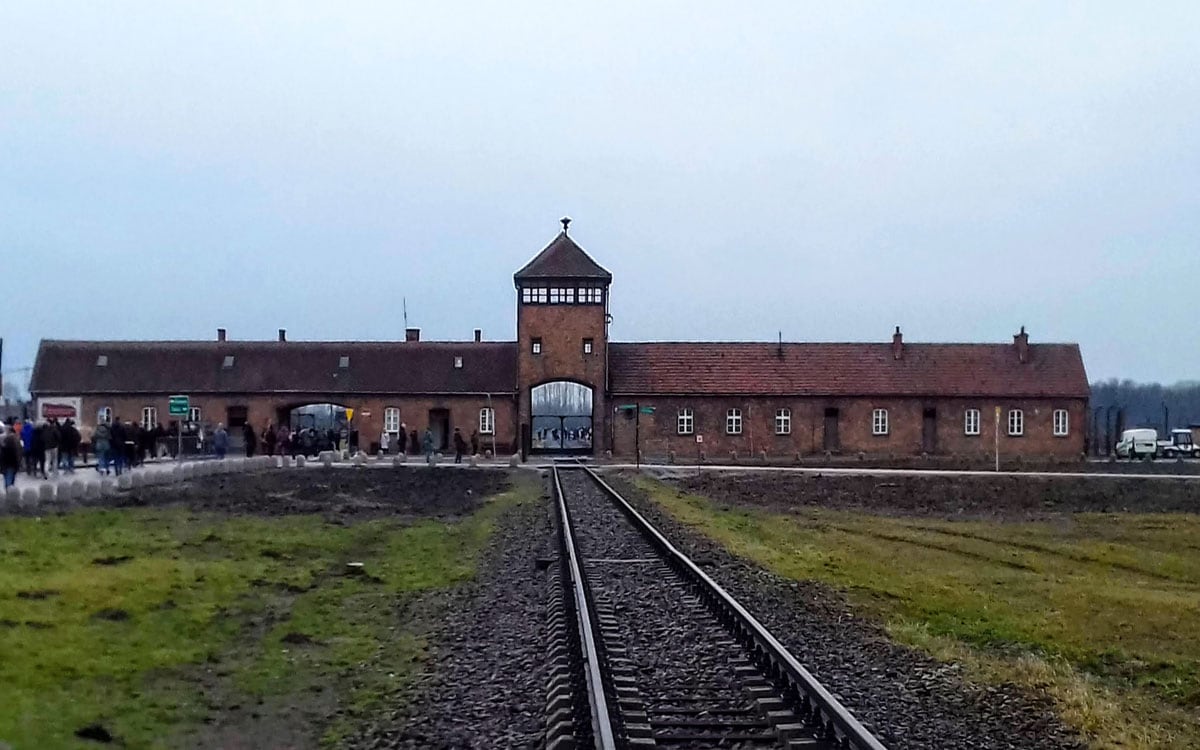


How to get to Auschwitz where is it located?
There are several ways to get to Auschwitz but remember Auschwitz Birkenau are located around 3 km from each other and that is around a 40-minute walk if you take public transit.
Auschwitz is located just outside the town of Oświęcim (which is the Polish version of Auschwitz). Oświęcim is about 70km from Kraków. Most visitors stay in Kraków and travel to Auschwitz by bus or guided tour. Buses depart hourly from the main bus station in Kraków, MDA dworzec autobusowy which stops next to the train station. The journey take around 1.5 hours each way and drops you off right by the Auschwitz Museum.
It is also possible to take the train from Kraków, though the train station is 1.5km away from the Memorial.
From mid-April to October there is a free shuttle bus that links the two sites and departs every hour. There are Auschwitz tours from both Krakow and Warsaw.
Why visit Auschwitz?
This is not typical tourism nor is it dark tourism this is a journey of remembrance and everyone should make this journey whenever possible. It is absolutely vital that we do not forget what happened or pretend it didn’t exist and places like this serve to remind us that humanity can and must do better.
A visit to Auschwitz should be required and mandatory for any individual caught with a Nazi symbol or acting as a holocaust denier. Our tour through this horrific place was quiet and pretty grim, to be honest. The guides were soft-spoken and drove home the nature of this place without falseness or drama. There is no need for drama at Auschwitz the nightmare speaks for itself.
I used to believe in free speech and that people who denied the holocaust or used Nazi symbols had the right to do that since it was freedom of speech. But after my visit to Auschwitz, I am now a believer in the fact that regulation needs to be enforced on these hate symbols.
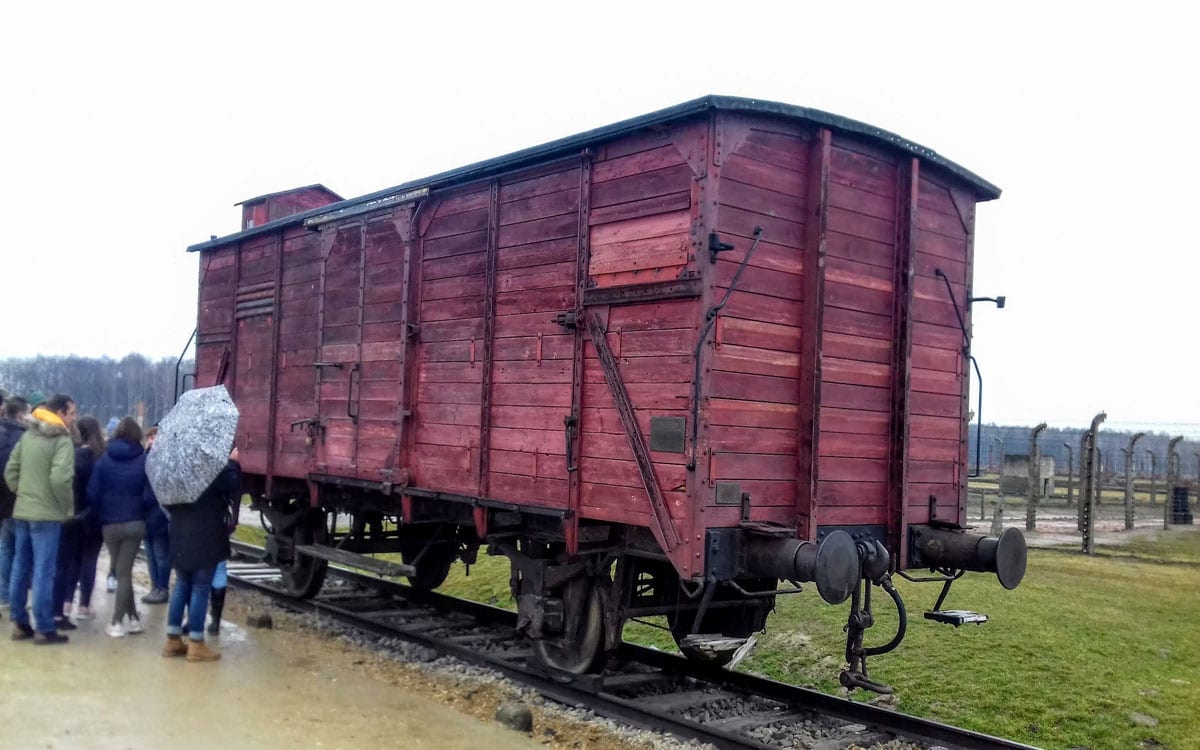

If you have the chance you must visit Auschwitz-Birkenau to keep the memory alive and ensure that we “never forget”. Soon all the survivors of the camps will be dead but we the younger generations must ensure that these horrors are never forgotten.
I am deeply disappointed in Poland currently as you would believe they had learned from these atrocities conducted by the Nazi’s but they continue to pass laws against LGBTQ people and attempt to outlaw them much as the Jews, Gypsies, Homosexuals and so on were massacred by the Nazis.
Auschwitz Birkenau History
Auschwitz-Birkenau opened in 1940 and was the largest of the Nazi concentration and death camps. Initially, Auschwitz served as a detention centre for Polish citizens arrested after Germany took over Poland in 1939. People were sent to Auschwitz from all over Poland these folks were politicians, resistance members, artists and protestors from musicians to celebrities.



Once Hitler put into place his “final solution” it soon became one of the most terrifying of Concentration camps where Jewish people and other “enemies of the state” as in Gypsies, Homosexuals, the Disabled both those physically and mentally, political prisoners, and those from the “resistance” were held prisoner, used as slave labour and eventually murdered.
When the Final Solution began its role quickly changed and Auschwitz was designated for use as the ‘final solution’ for all those perceived to present a threat to the Nazi regime (mainly Jews). It was here that millions of innocent people were subjected to cruel medical experimentation and murder. Auschwitz was “conveniently located near all the German-occupied countries in Europe and it was close to railway lines used to transport the victims to the camps.
Auschwitz was “conveniently located near all the German-occupied countries in Europe and it was close to railway lines used to transport the victims to the camps.
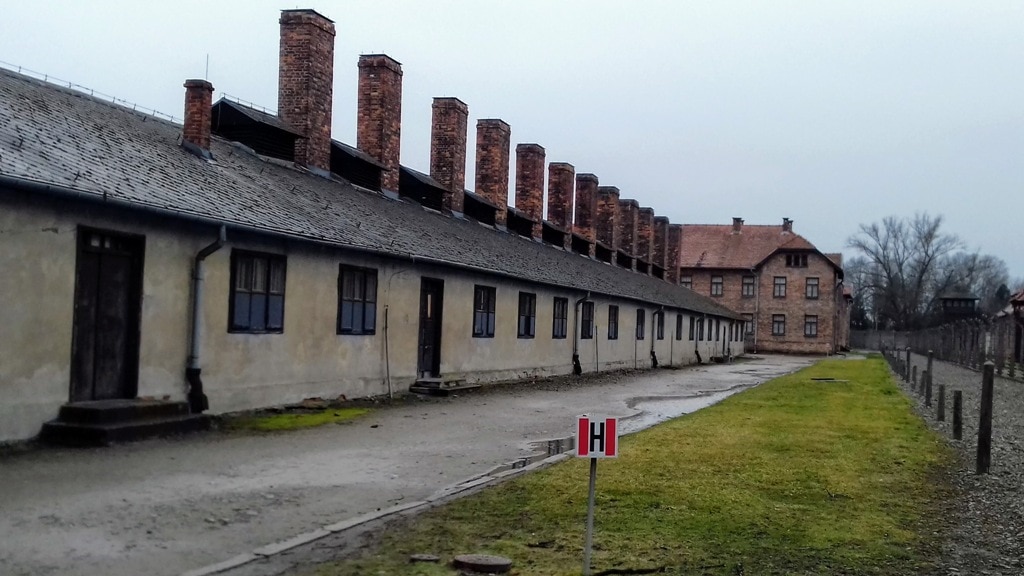

Auschwitz was also the place where the infamous Mengele “the angel of death” conducted his horrific experiments on prisoners. During World War II (1939-45), more than 1 million people, lost their lives at Auschwitz. In January 1945, with the Soviet army approaching, Nazi officials ordered the camp abandoned and sent an estimated 60,000 prisoners on a forced march to other locations. When the Soviet soldiers entered Auschwitz, they found thousands of emaciated detainees and piles of corpses left behind.
Auschwitz Birkenau location map
Auschwitz Birkenau is located in Southern Poland around an hour drive from Krakow. Auschwitz, in Polish, is called Oświęcim, the area is also known as Auschwitz-Birkenau. Auschwitz was actually three camps in one: a prison camp, an extermination camp, and a slave-labour camp. Many people also wonder how to pronounce Auschwitz, and it is Ow-svitch.
How to get to Auschwitz Concentration camp
We took the Musement Tour of Auschwitz which transported us by coach to the camps. There are several tours offered from Krakow and we found the Guide was excellent. The tour of Auschwitz takes around 2.5-3 hours, Birkenau around 2 hours and then breaks and the bus journey all add up to around 7.5 hours.
How to Get to Auschwitz from Krakow
From Krakow to Auschwitz takes around an hour and a half via bus the distance is about 66 km. To visit and tour Auschwitz Birkenau you can book a tour, hire a private taxi, use the public bus or visit by public train.
Keep in mind if you want to visit Auschwitz and Birkenau you can but the lineups can and will be massive. Many tourists arriving by local transit as in buses, trains and taxis end up waiting over many hours to be able to get a ticket and access the site. We picked up our bus at 10 am arrived at the Camp at 12:30 and gained immediate access to the tour. We saw at least 300 people waiting in line to buy tickets.
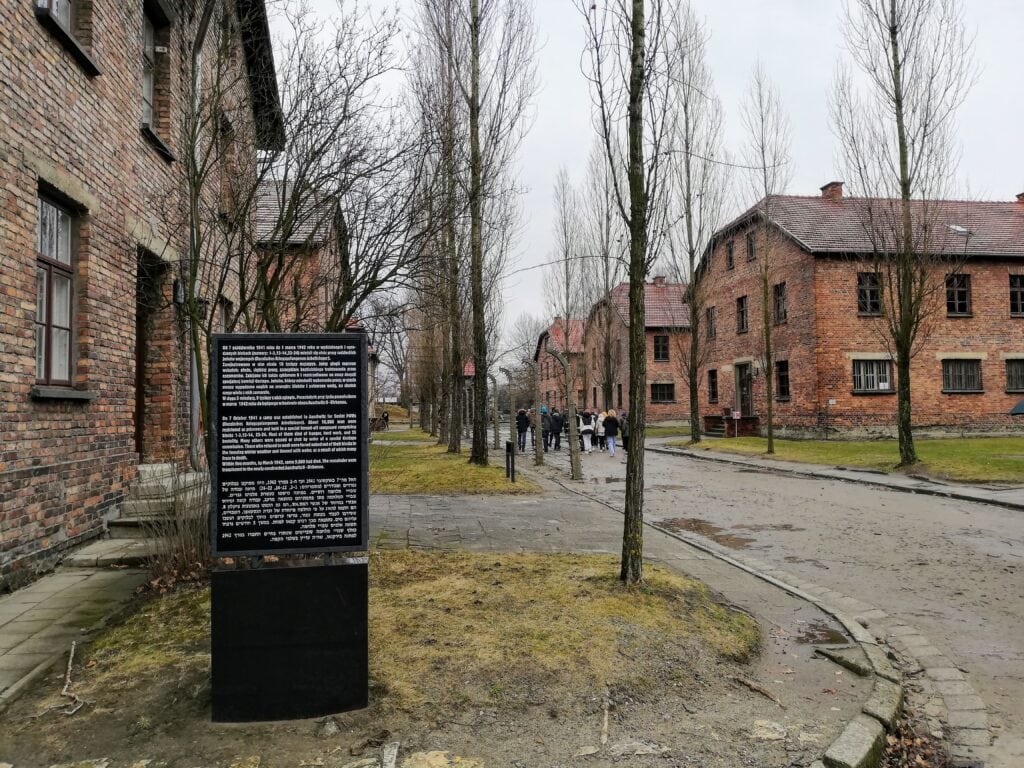

Auschwitz Concentration Camp tours from Krakow
One of the benefits of a guided tour to Auschwitz is that it handles all of your transportation needs, leaving you to sit and reflect on what you are about to see and what you have seen.
If you are looking to purchase the tour in advance, then the following links from Musement Auschwitz may suit you.
They feature fast-track entry which is advisable as there can often be queues of up to two hours to enter. Here are the tour options offered by Musement.
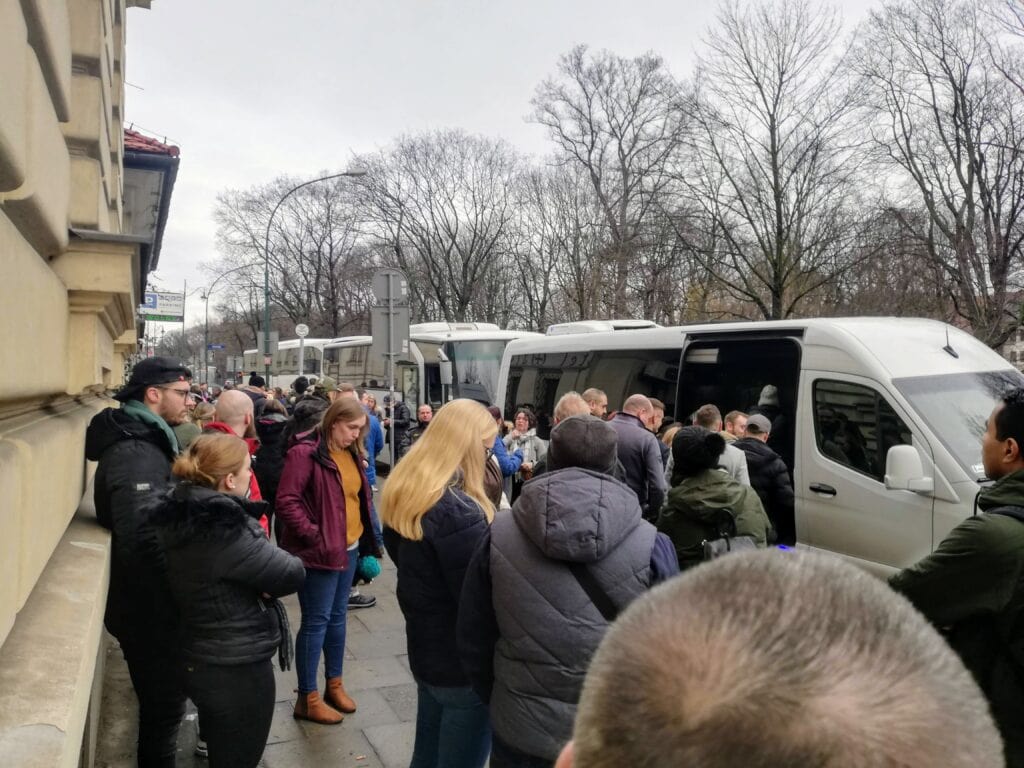

Auschwitz Group Tour from Krakow
You can visit Auschwitz as a day trip and this full-day tour to Auschwitz-Birkenau offers a Krakow pick up in a comfortable air-conditioned bus with an English speaking driver. Every year, millions of visitors from around the world walk through the gate bearing that inscription: ‘Arbeit Macht Frei. Walking the same path as prisoners from over half a century ago.
Our guide met us at the bus where there were several language groups including English, French, Italian and Polish. Our Guide spoke all 4. We were informed about how the tour worked upon arrival at Auschwitz. A day tour like this takes around 7-7.5 hours.
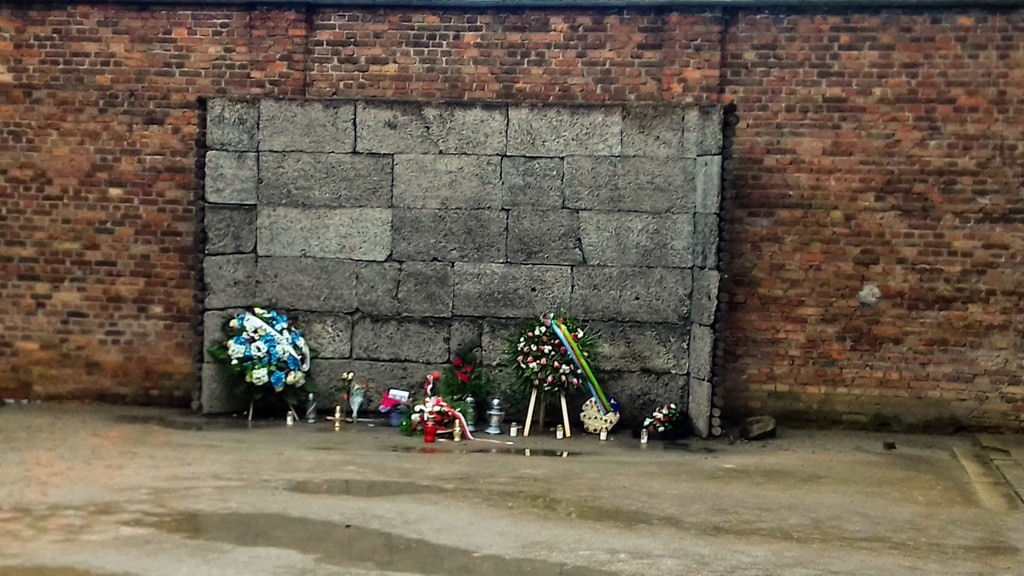

Our guide informed us about the breaks and although many were told to bring a packed lunch we were not allowed to eat lunch or drink hot beverages on the bus. We actually had a couple of 15-20 minutes stops to get lunch or a coffee.
At both Auschwitz and Birkenau, there are coffee shops or cafes available along with shops where you can buy “souvenirs” or books. The books were interesting but I felt the souvenir aspect was tacky but they were not Auschwitz souvenirs mainly Polish.
During the tour, you will experience both Auschwitz and Birkenau camps while you learn about the history of both camps and the holocaust.
The tour includes a guide-led exploration of the prison blocks, gas chambers and crematoria building.
Visiting the Auschwitz-Birkenau Memorial and Museum
The Auschwitz Birkenau state museum is a very tough place to visit and when you enter those iron gates with ‘Arbeit Macht Frei’ hanging over your head you will learn of the absolute inhumanity of the Nazi party and of the heinous treatment and conditions meted out by evil humans.
One of the areas that struck me quite hard was Kanada. I learned from the guide that the storage facilities for the items stolen from the Jews and other prisoners was known as Kanada. It was named this because Canada was considered to be the land of plenty and the arriving prisoners were of the belief that they would soon arrive at this Land of Plenty.
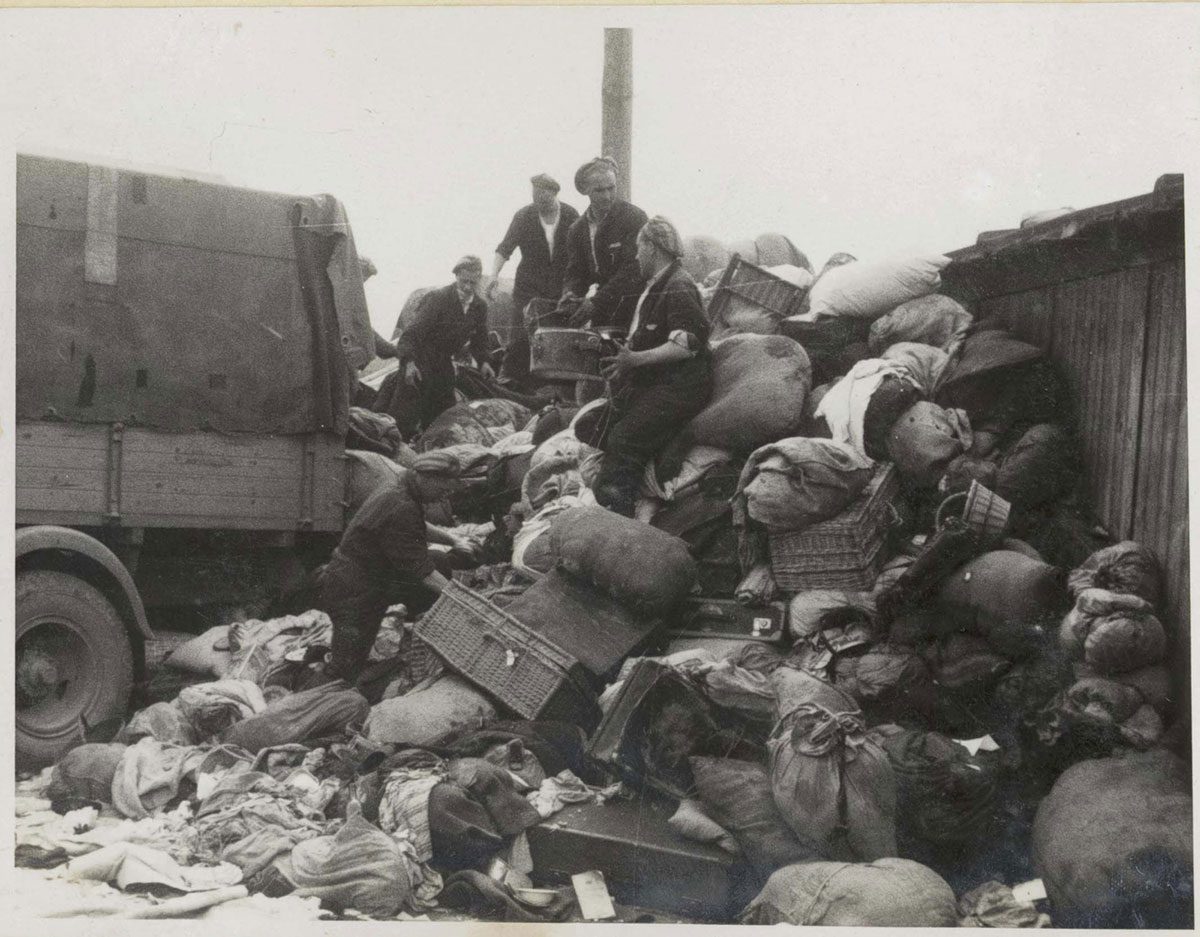

The Auschwitz Album
The Auschwitz Album is the only surviving visual evidence of the process leading to the mass murder at Auschwitz-Birkenau. It is a unique document and was donated to Yad Vashem by Lilly Jacob-Zelmanovic Meier. To view the Auschwitz Album click here
The photos were taken at the end of May or beginning of June 1944, either by Ernst Hofmann or by Bernhard Walter, two SS men whose task was to take ID photos and fingerprints of the inmates (not of the Jews who were sent directly to the gas chambers).
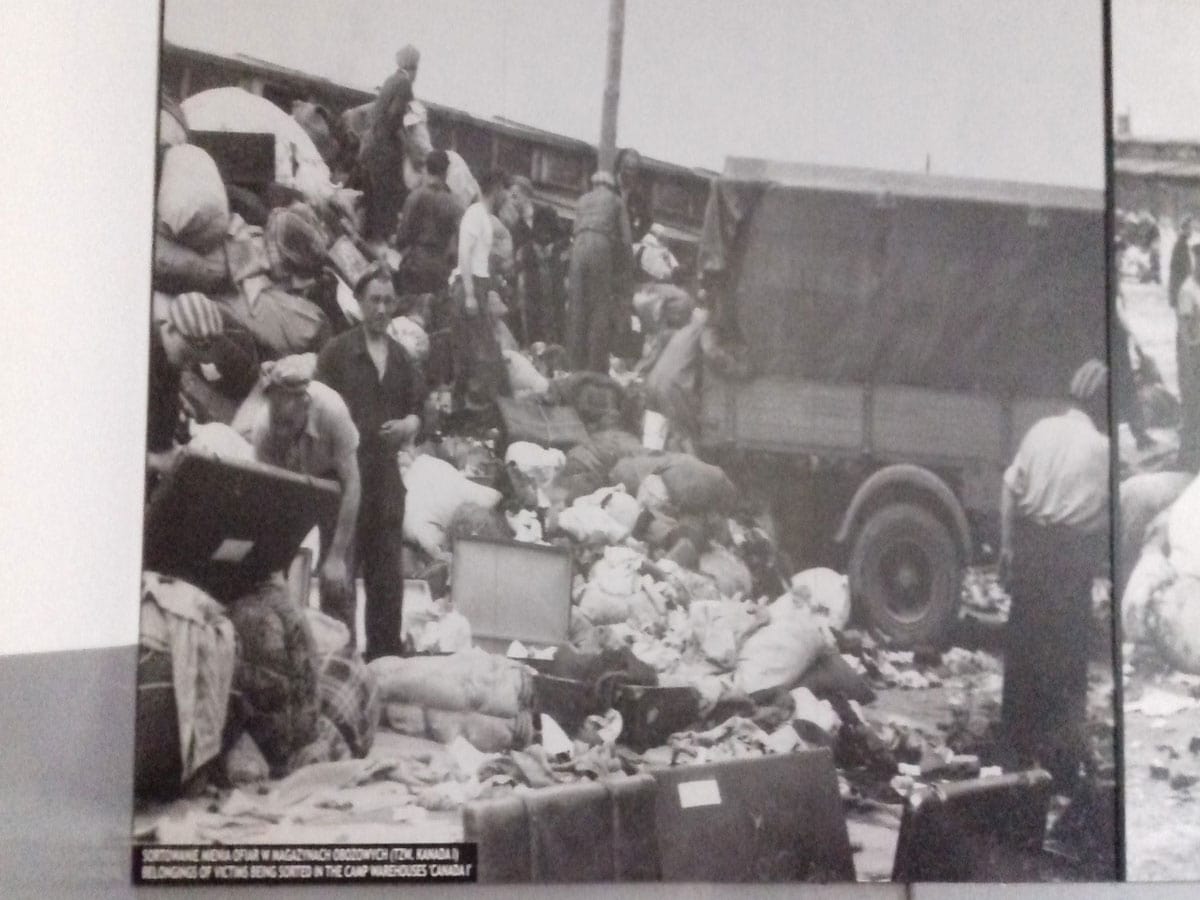

The Tour Guides lead us through a series of brick buildings some with haunting photos on the walls of those who were imprisoned here.
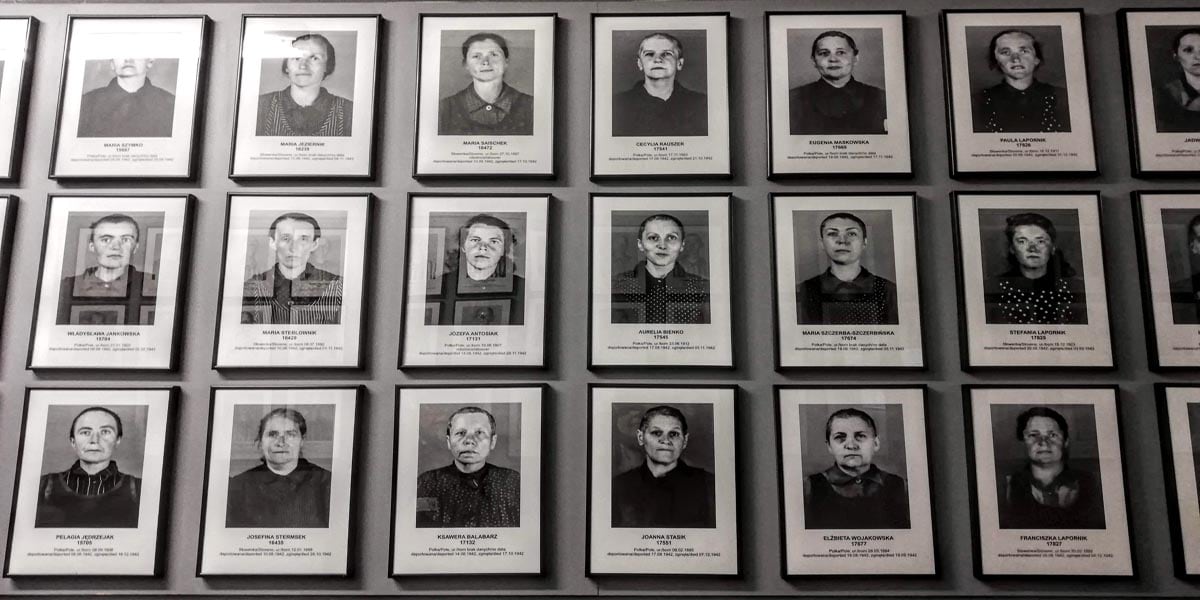

I expected wooden huts where the prisoners were kept but they were solid red brick buildings that held onto a real sense of gloom.
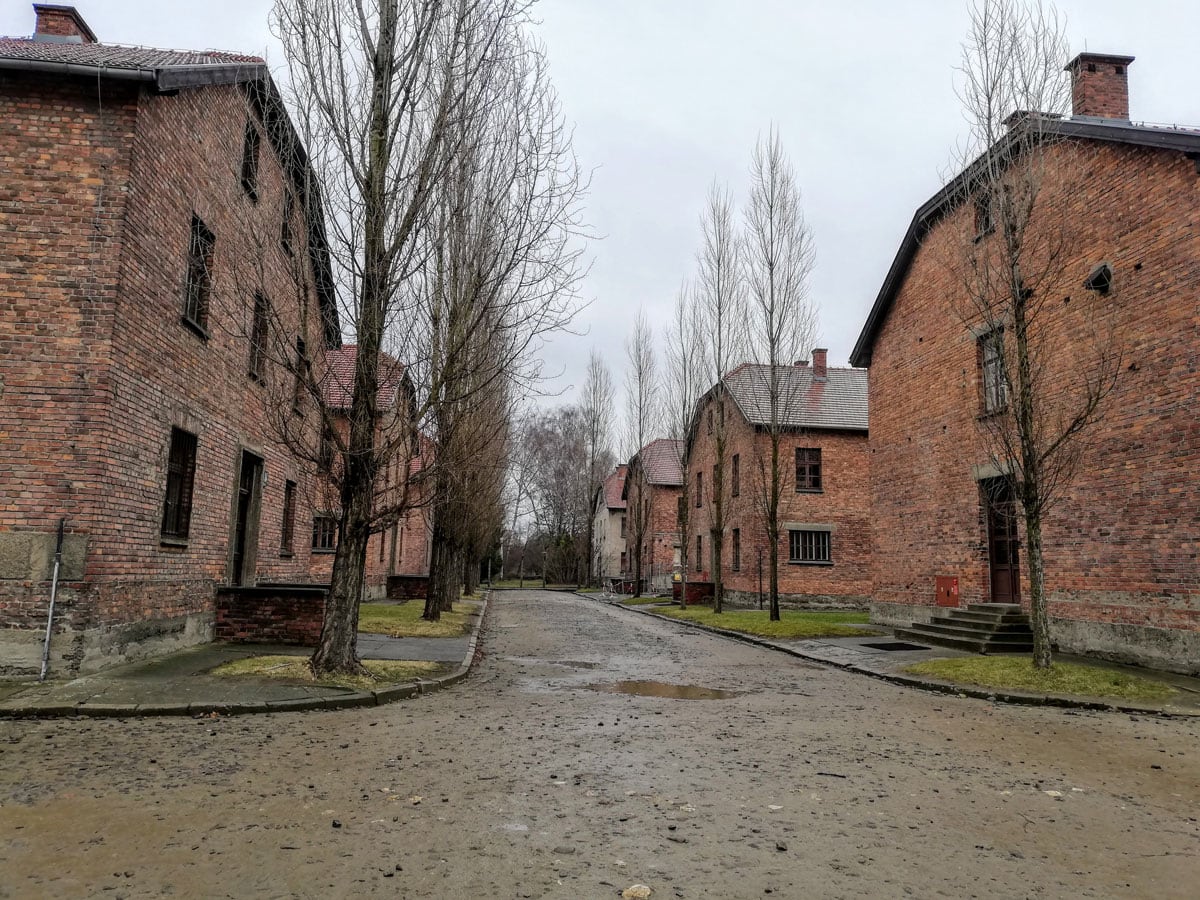

Some buildings had large rooms filled with items such as suitcases, bags and personal belongings.
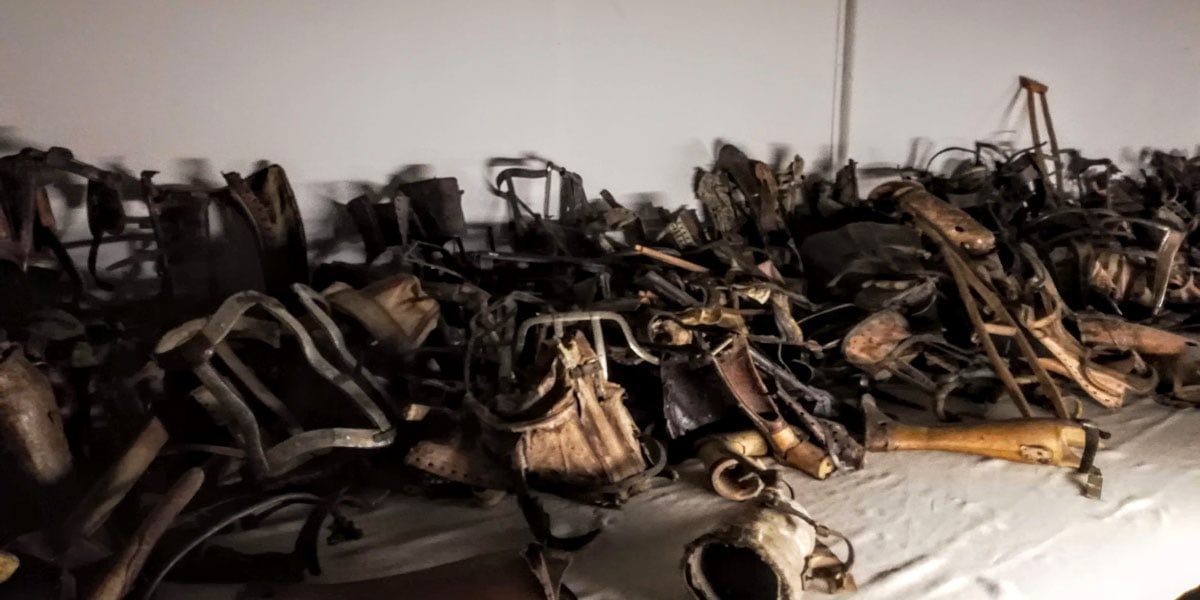

Some had straw-filled mattresses or bunks that slept 10 people each.
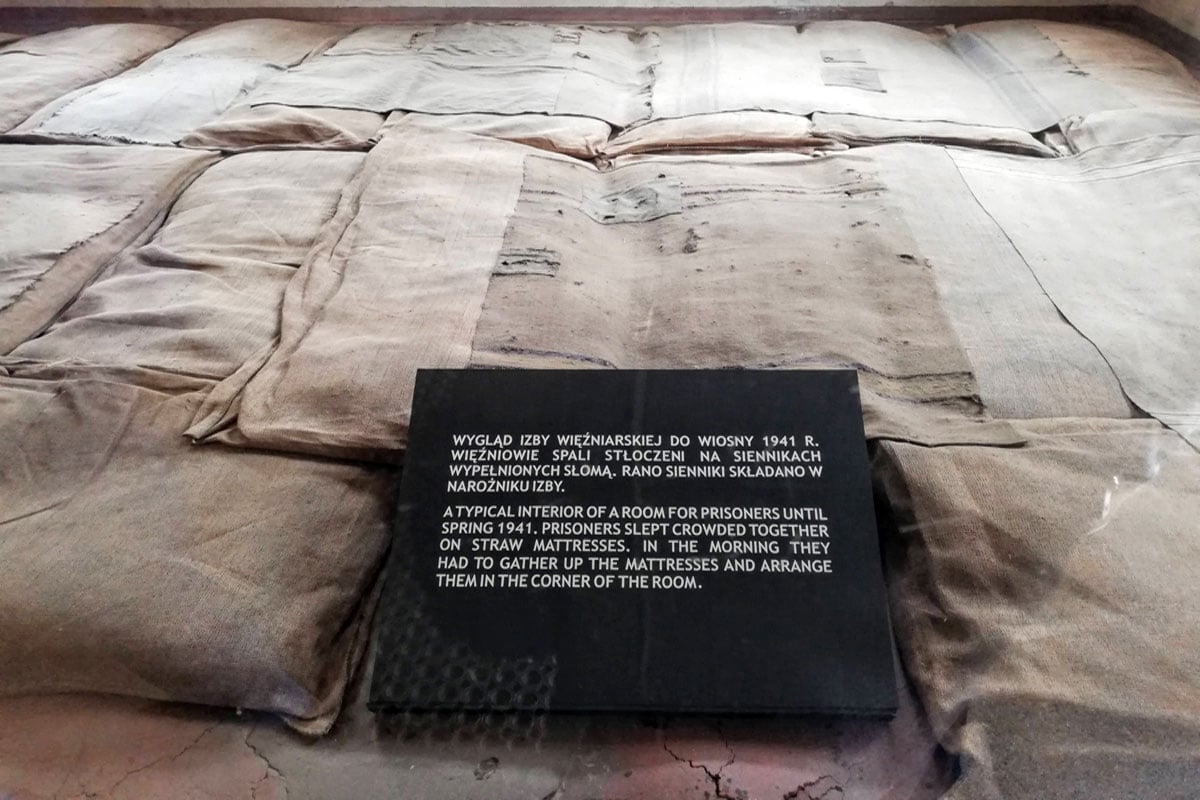

Views outside the windows in the buildings showed the barbed wire and concrete posts surrounding the camps, the guard stations from where you were shot if you got too close to the wires.
We passed execution places, ruined crematoriums, Mengele’s experiment rooms and the area of the only hanging at Auschwitz. The first commandant of Auschwitz, SS-Obersturmbannführer Rudolf Höss, who was tried and sentenced to death after the war by the Polish Supreme National Tribunal, was hanged here on 16 April 1947.
There’s a curious feel to Auschwitz that is hard to describe. It is desolate, and dead there is a dullness to the place, not in the sense of boring but as if the air that surrounds the camp is dead. All the pain and death that were suffered here has made the place a living tomb which is as it should be.
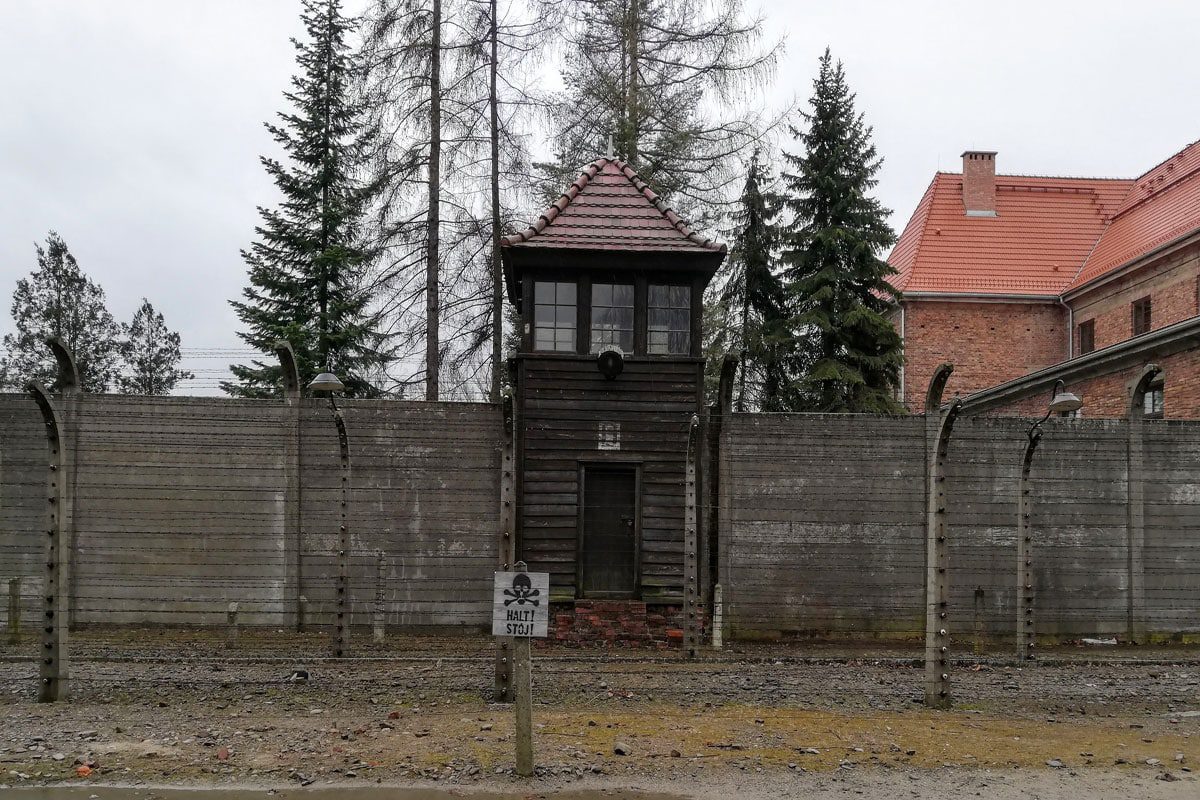

Walking through both camps we hear groups of Israeli young people singing the Hatikvah.
A national anthem was written more than 50 years before the birth of the state for which it was composed, “Hatikvah” has served as a source of hope and inspiration for Jews who have found themselves in the direst of circumstances. During the darkest hours of the Holocaust, Jews defied their tormentors by singing the song’s powerful lyrics.
‘The SS could not stop them’
Filip Muller was a Sonderkommando in Auschwitz—a Jewish slave labourer who was kept alive because he helped take corpses from the gas chambers to the crematoria. One of the very few Sonderkommandos to survive the Holocaust, Muller later described the remarkable behaviour of one group of Czech Jews who were being marched towards the gas chambers and were told what was about to happen:
“Their voices grew subdued and tense, their movements forced, their eyes stared as though they had been hypnotized… Suddenly a voice began to sing. Others joined in, and the sound swelled into a mighty choir. They sang first the Czechoslovak national anthem and then the Hebrew song ‘Hatikvah.’”
We must never lose hope that the Holocaust will always be remembered and we must stand and fight injustice towards any people everywhere.
March of the Living
The International March of the Living is an annual educational program, bringing individuals from around the world to Poland and Israel to study the history of the Holocaust and to examine the roots of prejudice, intolerance and hatred. Sadly this year 2020 the March may be cancelled due to the Coronavirus.
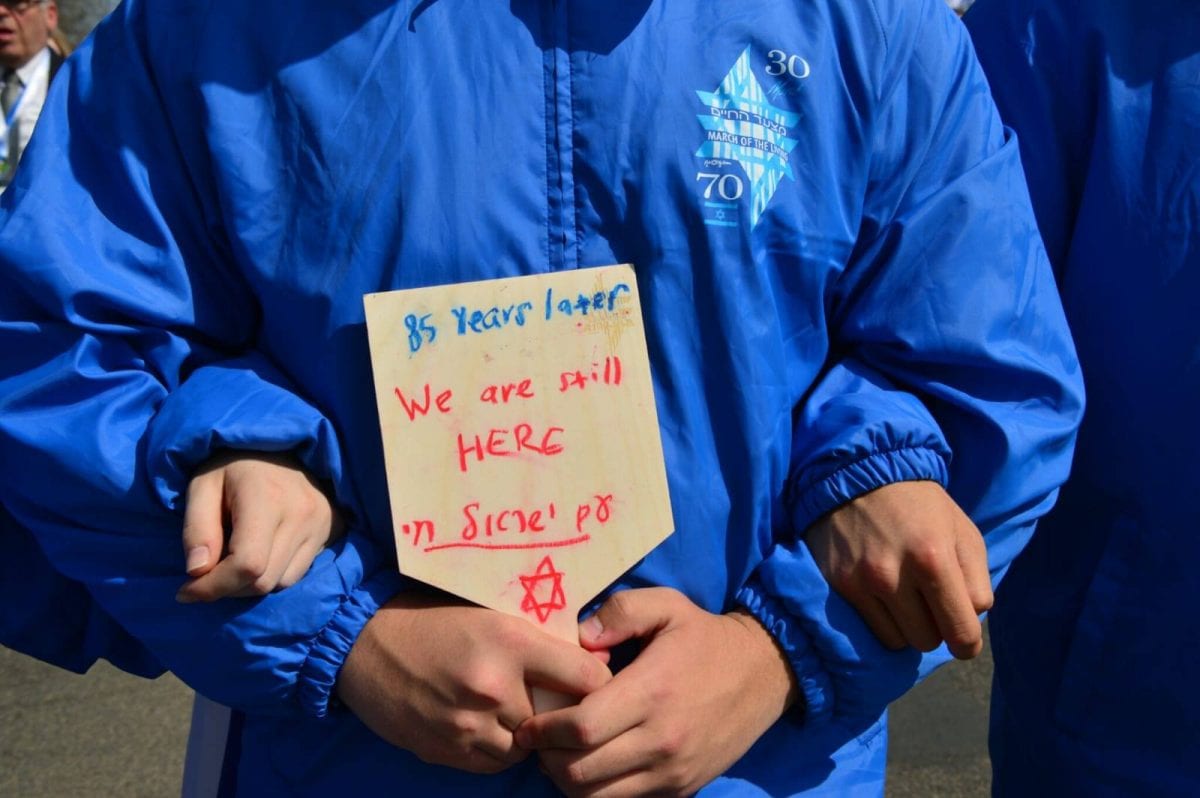

“The universal goal of the International March of the Living is to help inspire our participants to fight indifference, racism and injustice by witnessing the atrocities of the Holocaust. Our hope is that the program will help strengthen Jewish identity, connections to Israel and build a community of future Jewish leaders.”
History and the study of humankind has always been something that has fascinated me and in particular visiting places like Auschwitz, the site of the Battle of Bannockburn, Spike Island, Schindler’s Factory and other so-called dark tourism places not because I have some weird fetish about these places but I have this notion that they are a place where I can pay my respects to those who suffered through events that I have a need to understand and ensure are not forgotten.
Since that time I made it a priority to understand other religions, since I essentially had none, and in particular read everything I could get my hands on about Judaism, the struggle for an Israeli state, the Holocaust and books from those who survived.
Books about Auschwitz
These are a few of the books I read and recommend:
ANNE FRANK THE UNTOLD STORY: The hidden truth about Elli Vossen, the youngest helper of the Secret Annex
This book is about Otto Frank’s young secretary Bep Voskuijl, Elli Vossen who became remarkable support for Anne Frank during the years she was hidden on Prinsengracht in Amsterdam. Bep is 23 years old and does her best to support the hidden family and in doing so becomes great friends with Anne. Bep is the one who saved Anne’s Diary and writings.
The New York Times referred to Leon Uris’s Mila 18 as “Not only authentic as history, [but] convincing as fiction!”Mila 18 is a thrilling novel that brings to life the Jewish uprising of the Warsaw ghetto, during which prisoners used homemade weapons and their bare fists to go up against the power and cruelty of their German captors.
Schindler’s List by Thomas Keneally
Schindler’s List is arguably one of the best-known novels about the Holocaust. Schindler’s List is a novelization of the real-life efforts of Oskar Schindler, a German war profiteer and factory director who risked his life to save more Jews from death than any other single person in World War II history. You can also visit the Schindler Factory in Krakow which has now been turned into a permanent exhibition of Krakow under Nazi Occupation.
Hope is the last to die by Halina Birenbaum
This is a book I purchased at the Birkenau Bookshop and it is written by Halina a survivor of Auschwitz. Halina spent the occupation in the Warsaw Ghetto and in concentration camps at Majdanek Auschwitz, Ravenbruck and Newstadt-Glewe where the Auswitch survivors were shipped to hide them from the Russians and Americans who liberated the camp. Halina was freed in 1945. This is a deeply horrifying story of survival in the camp and the process of dehumanization and of the survival of hope.
You can also find Schindler’s List and Anne Frank on DVD to watch and learn before you come to Poland.
German Law on Nazi symbols
In Germany, the law considers swastikas and SS sig runes the “symbols of anti-constitutional organizations.” Displaying them publicly or selling goods that have symbols on them is illegal. The Nazi salute and statements such as “Heil Hitler” are also banned in public. In fact, the band KISS when they appeared in Germany were not allowed to use the sig runes that bracketed the stage during their shows in other countries.
Swastikas and other banned symbols can, however, be displayed in Germany if they are used for “civic education, countering anti-constitutional activities, art and science, research and education, the coverage of historic and current events, or similar purposes,” according to the Criminal Code.
